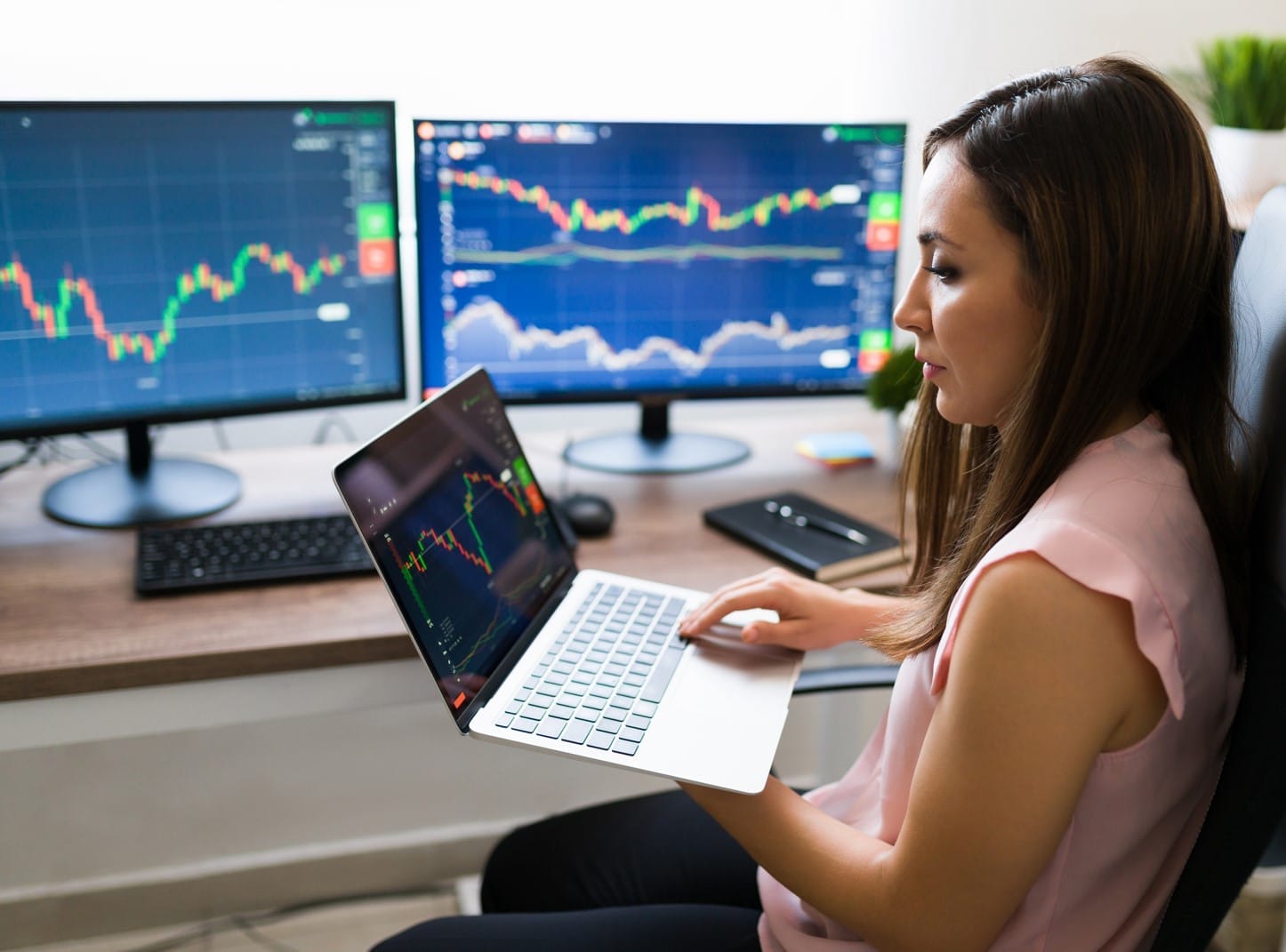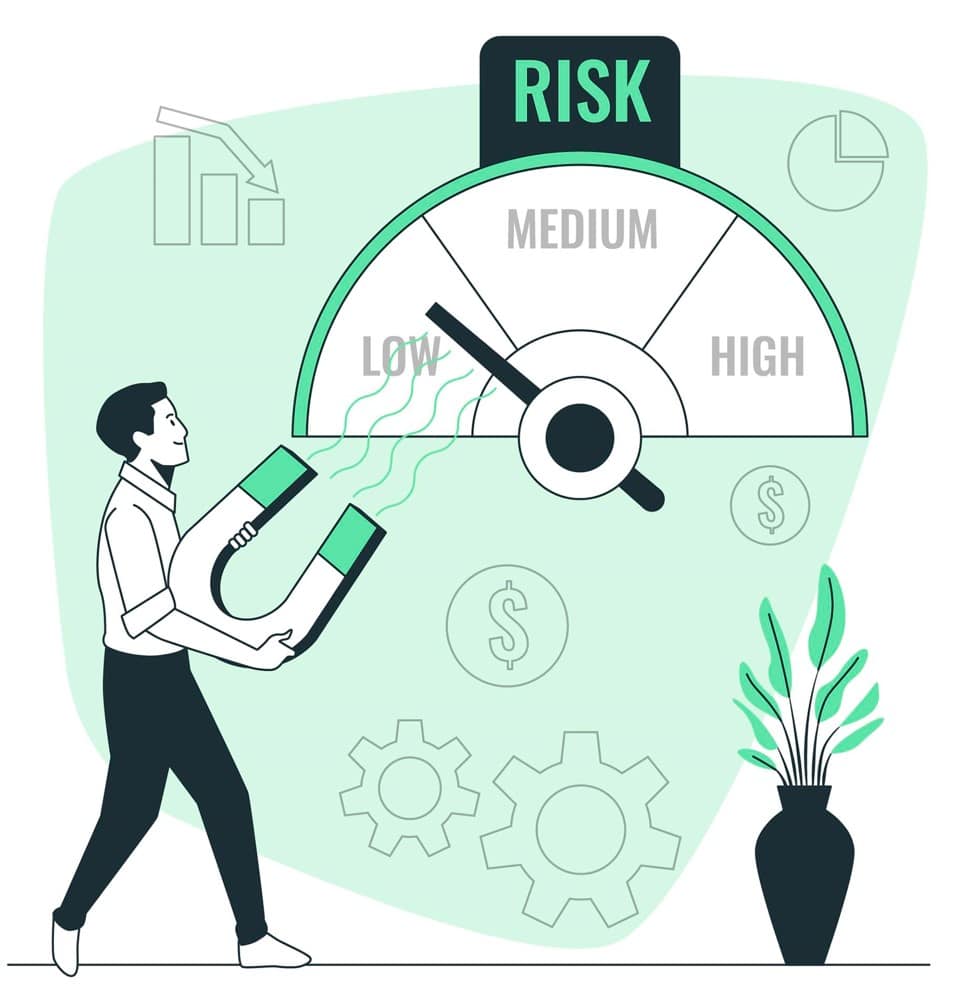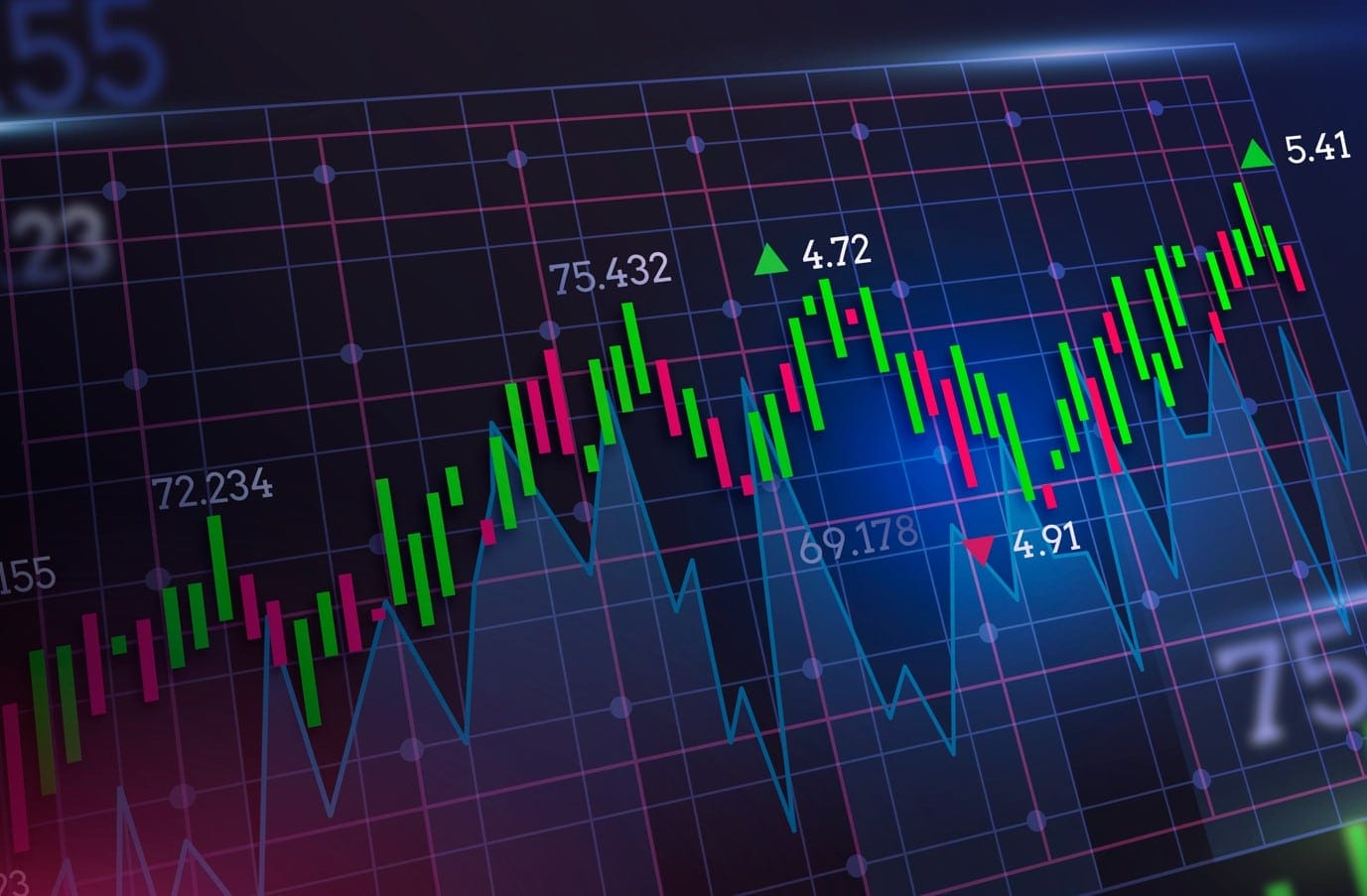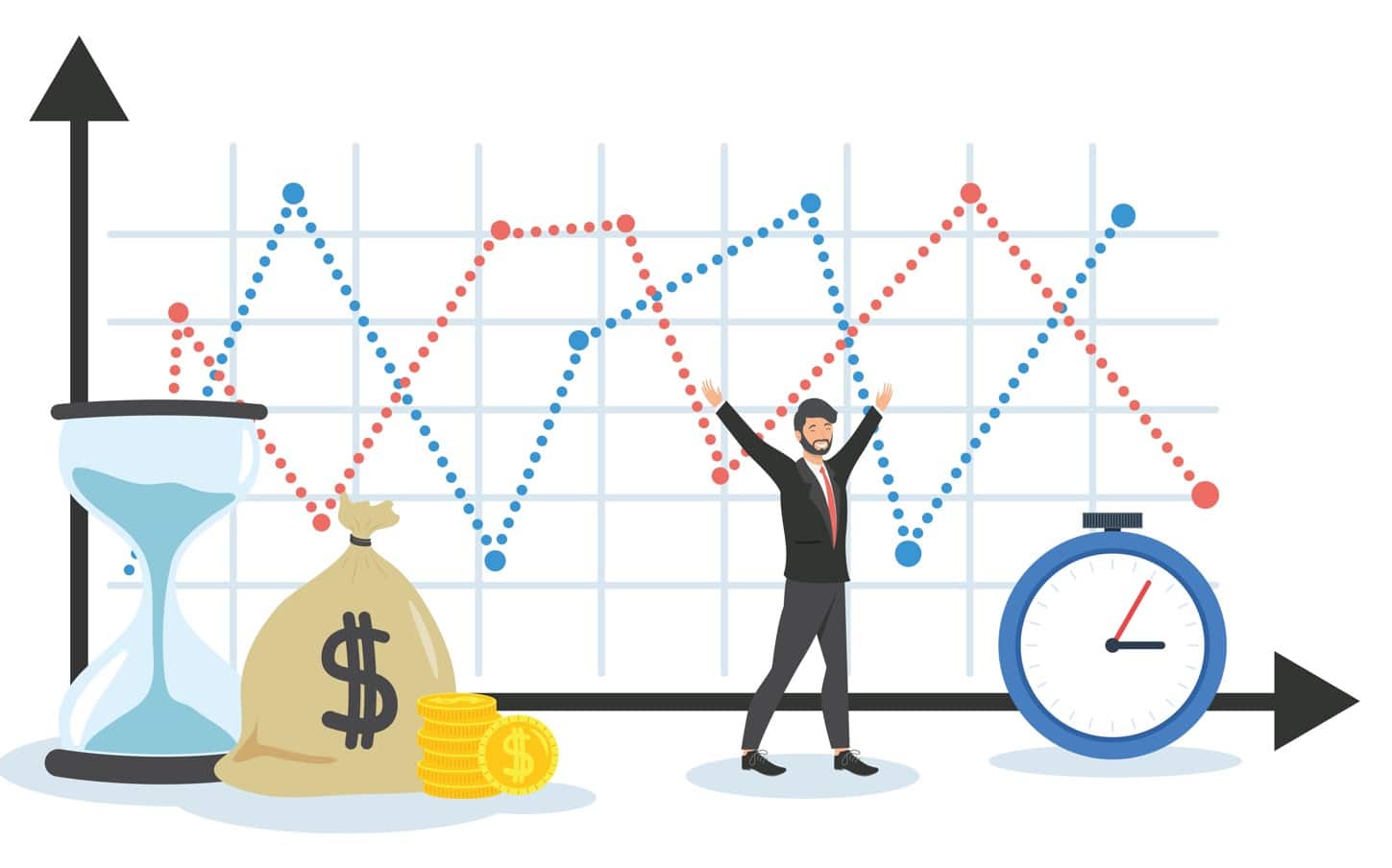Forex trading, also known as foreign exchange trading, is the act of buying and selling currencies with the aim of making a profit.
It is a popular investment option due to its potential for high returns and accessibility. However, navigating the forex market successfully requires knowledge, skill, and a strategic approach. In this comprehensive guide, we will explore the key factors that can contribute to profitability in forex trading investment. From understanding the market dynamics to developing effective trading strategies, we will delve into various aspects that can help you become a profitable forex trader.
1) Understanding the Forex Market
1.1 What is Forex Trading?

Forex trading involves the buying and selling of currencies. The forex market is the largest financial market globally, with trillions of dollars exchanged daily. Traders aim to profit from fluctuations in currency prices caused by various factors such as economic indicators, geopolitical events, and central bank policies.
1.2 Major Participants in the Forex Market

The forex market comprises several key participants, including central banks, commercial banks, corporations, institutional investors, retail traders, and speculators. Understanding their roles and influence in the market can provide valuable insights into market dynamics.
1.3 Market Structure and Dynamics

The forex market operates 24 hours a day, five days a week, across different time zones. It is decentralized and consists of various currency pairs. Understanding concepts such as bid/ask prices, liquidity, market sessions, and currency correlations is crucial for successful trading.
2) Building a Solid Foundation
2.1 Forex Trading Education

Obtaining a solid education in forex trading is essential for long-term success. This involves learning about fundamental and technical analysis, trading strategies, risk management, and trading psychology. Numerous online resources, courses, webinars, and books are available to educate traders.
2.2 Market Analysis and Research

Conducting thorough market analysis and research is crucial before making trading decisions. Fundamental analysis involves studying economic indicators, news events, and geopolitical factors that impact currency prices. Technical analysis involves analyzing price charts, identifying patterns, and utilizing indicators and oscillators to predict future price movements.
2.3 Developing a Trading Plan

A trading plan outlines a trader’s strategy, including entry and exit rules, risk tolerance, and money management guidelines. A well-defined trading plan helps maintain discipline and consistency in decision-making, leading to better trading outcomes.
2.4 Risk Management Strategies

Effective risk management is paramount in forex trading. This involves setting appropriate stop-loss and take-profit levels, determining position sizes based on risk-reward ratios, and diversifying the portfolio. Risk management helps protect capital and minimize losses during adverse market conditions.
3) Choosing the Right Broker
3.1 Regulation and Security

Selecting a reputable and regulated forex broker is crucial to ensure the safety of funds and fair trading conditions. Regulatory bodies such as the Financial Conduct Authority (FCA), the Australian Securities and Investments Commission (ASIC), and the Cyprus Securities and Exchange Commission (CySEC) provide oversight and protection for traders.
3.2 Trading Platform and Tools

A reliable trading platform with user-friendly features, advanced charting tools, and real-time market data is essential. Additionally, access to educational resources, economic calendars, and technical analysis tools can assist traders in making informed trading decisions.
3.3 Account Types and Spreads

Brokers offer different account types with varying spreads and commission structures. Traders should choose an account type that aligns with their trading style and preferences. Low spreads can reduce trading costs, particularly for frequent traders.
3.4 Customer Support and Reputation

Good customer support is crucial for addressing trading-related queries and technical issues. Researching a broker’s reputation through online reviews, forums, and recommendations can provide insights into their reliability and service quality.
4) Fundamental Analysis
4.1 Understanding Economic Indicators

Economic indicators such as Gross Domestic Product (GDP), inflation rates, employment data, and interest rates have a significant impact on currency prices. Traders should learn to interpret and analyze these indicators to anticipate market movements.
4.2 News and Events that Affect the Forex Market

News events such as central bank announcements, geopolitical developments, and economic data releases can cause significant market volatility. Keeping track of important news and events and understanding their potential impact on currencies is crucial for successful trading.
4.3 Interpreting Central Bank Policies

Central banks play a vital role in shaping monetary policies and interest rates. Analyzing and interpreting central bank statements and policies can provide valuable insights into future currency movements.
4.4 Impact of Geopolitical Factors

Geopolitical events, such as elections, geopolitical tensions, and trade agreements, can create volatility in the forex market. Traders should stay informed about global political developments that may impact currency values.
5) Technical Analysis
5.1 Price Action Analysis

Price action analysis involves studying and interpreting price movements and patterns on charts. It helps traders identify support and resistance levels, trend lines, and chart patterns, enabling them to make informed trading decisions.
5.2 Chart Patterns

Chart patterns, such as triangles, head and shoulders, and double tops/bottoms, provide visual representations of market sentiment and potential price reversals. Recognizing and understanding these patterns can help traders anticipate future price movements.
5.3 Trend Analysis

Identifying and following trends is a fundamental aspect of technical analysis. Traders can use various tools and indicators, such as moving averages and trend lines, to identify and confirm trends and align their trades accordingly.
5.4 Indicators and Oscillators

Technical indicators and oscillators, such as Relative Strength Index (RSI), Moving Average Convergence Divergence (MACD), and Stochastic Oscillator, provide additional insights into market conditions and potential entry or exit points. Traders should learn to use these tools effectively to enhance their trading decisions.
6) Developing a Trading Strategy
6.1 Scalping Strategy

Scalping involves making quick trades to capture small price movements. Traders employing this strategy focus on short-term charts, use tight stop-loss orders, and aim for small but frequent profits.
6.2 Day Trading Strategy

Day trading involves opening and closing positions within the same trading day. Day traders focus on intraday price movements and aim to capitalize on short-term trends and volatility.
6.3 Swing Trading Strategy

Swing trading involves holding positions for several days to weeks, aiming to capture medium-term price movements. Swing traders typically use a combination of technical and fundamental analysis to identify potential swing trade setups.
6.4 Position Trading Strategy

Position trading involves holding trades for an extended period, ranging from weeks to months or even years. Position traders focus on long-term trends and use fundamental analysis to identify potential currency appreciation or depreciation.
7) Risk and Money Management
7.1 Setting Risk-to-Reward Ratios
Setting appropriate risk-to-reward ratios helps traders assess the potential profitability of a trade relative to the potential loss. Traders should aim for a favorable risk-to-reward ratio, typically above 1:2 or 1:3, to ensure that potential profits outweigh potential losses.
7.2 Determining Position Sizes

Position sizing involves determining the appropriate amount of capital to allocate to each trade based on risk tolerance and account size. Traders should avoid risking a significant portion of their capital on a single trade and use position sizing techniques such as fixed percentage risk or the Kelly criterion.
7.3 Using Stop-Loss and Take-Profit Orders

Stop-loss and take-profit orders are essential risk management tools. Stop-loss orders help limit losses by automatically closing a position at a predetermined price level, while take-profit orders lock in profits by closing a position when a specific profit target is reached.
7.4 Managing Emotions and Discipline

Controlling emotions, such as fear and greed, is crucial for maintaining discipline in trading. Traders should follow their trading plan, avoid impulsive decisions, and stay consistent with their strategies, regardless of market fluctuations.
8) Back testing and Demo Trading
8.1 Importance of Back testing

Backtesting involves analyzing the performance of a trading strategy using historical data. By simulating trades based on past market conditions, traders can assess the viability and profitability of their strategies before risking real capital.
8.2 Using Demo Accounts

Demo accounts provide a risk-free environment for traders to practice and refine their strategies. Traders can gain hands-on experience, test different approaches, and familiarize themselves with the trading platform’s features without risking real money.
8.3 Analyzing Results and Adjusting Strategies

Analyzing the results of back testing and demo trading helps traders identify strengths and weaknesses in their strategies. Based on the analysis, traders can make necessary adjustments and refinements to optimize their trading approach.
9) Live Trading and Continuous Learning
9.1 Starting with Small Positions

When transitioning from demo trading to live trading, it is advisable to start with small positions and gradually increase trading size as confidence and consistency are established. This approach helps manage risk and minimizes potential losses during the learning phase.
9.2 Keeping a Trading Journal

Maintaining a trading journal allows traders to record and review their trades, decisions, and emotions. It provides insights into strengths and weaknesses, helps identify patterns, and facilitates continuous improvement.
9.3 Monitoring and Adapting to Market Conditions

Markets are dynamic and ever-changing. Traders should continuously monitor market conditions, adapt their strategies when necessary, and stay informed about global events that may impact currency markets.
9.4 Continuously Improving Trading Skills

Forex trading requires ongoing education and development of trading skills. Traders should stay updated with market trends, explore new trading strategies, attend webinars or seminars, and engage in forums or communities to learn from experienced traders.
10) Managing Psychology and Emotions
10.1 Controlling Fear and Greed

Fear and greed are common emotions that can negatively impact trading decisions. Traders should cultivate emotional discipline, avoid impulsive actions driven by fear or greed, and stick to their trading plan.
10.2 Staying Disciplined and Patient
Discipline and patience are crucial virtues in forex trading. Traders should wait for optimal trading setups, avoid overtrading, and maintain consistency in following their trading plan.
10.3 Developing a Positive Mindset

Maintaining a positive mindset can help traders navigate the ups and downs of the forex market. Positive affirmations, visualization techniques, and mindfulness practices can contribute to a trader’s overall well-being and mental resilience.
10.4 Seeking Support and Mentorship

Connecting with like-minded traders, joining trading communities, or seeking mentorship from experienced professionals can provide valuable guidance, support, and insights. Learning from others’ experiences can accelerate a trader’s learning curve.
11) Utilizing Risk Management Tools
11.1 Using Trailing Stops

Trailing stops are dynamic stop-loss orders that move with the market price. They allow traders to protect profits by automatically adjusting the stop-loss level as the trade moves in their favor.
11.2 Hedging Strategies

Hedging involves opening offsetting positions to mitigate potential losses. Traders can employ strategies such as using correlated currency pairs, options, or futures contracts to hedge against adverse market movements.
11.3 Diversification

Diversifying a trading portfolio by trading different currency pairs or including other asset classes, such as commodities or indices, can help reduce overall risk. Diversification allows traders to capitalize on multiple market opportunities.
11.4 Portfolio Management
Managing a portfolio of trades involves regularly reviewing open positions, reassessing risk levels, and adjusting positions as needed. Traders should aim for a well-balanced portfolio that aligns with their risk tolerance and investment goals.
12) Adapting to Changing Market Conditions
12.1 Recognizing Market Cycles

Forex markets go through various cycles, including trending, ranging, and consolidating phases. Recognizing these cycles can help traders adjust their strategies accordingly and identify favorable trading opportunities.
12.2 Adjusting Trading Strategies
Market conditions can change rapidly. Traders should be flexible and adaptable, willing to adjust their strategies or even switch between different trading approaches as market dynamics evolve.
12.3 Flexibility and Agility

Successful forex traders remain flexible and agile in response to changing market conditions. This includes adjusting trade sizes, altering entry and exit points, and being open to different trading opportunities.
12.4 Continuous Education and Learning
The forex market is constantly evolving, and traders need to stay informed and updated. Continuous education, learning from experiences, and staying connected to industry developments are essential for long-term success.
Conclusion
Forex trading can be a highly profitable investment venture when approached with the right knowledge, skills, and strategies. By understanding the market dynamics, building a solid foundation, choosing the right broker, and employing both fundamental and technical analysis, you can enhance your chances of success in the forex market. Additionally, developing a robust trading strategy, managing risks effectively, and continuously learning and adapting to changing market conditions are key factors in achieving profitability. Remember to focus on managing psychology and emotions, and utilize risk management tools to safeguard your capital. With dedication, discipline, and perseverance, you can embark on a profitable forex trading journey.
Don’t trade all the time, trade forex only at the confirmed trade setups.
Get more confirmed trade setups here: forexgdp.com/buy/





